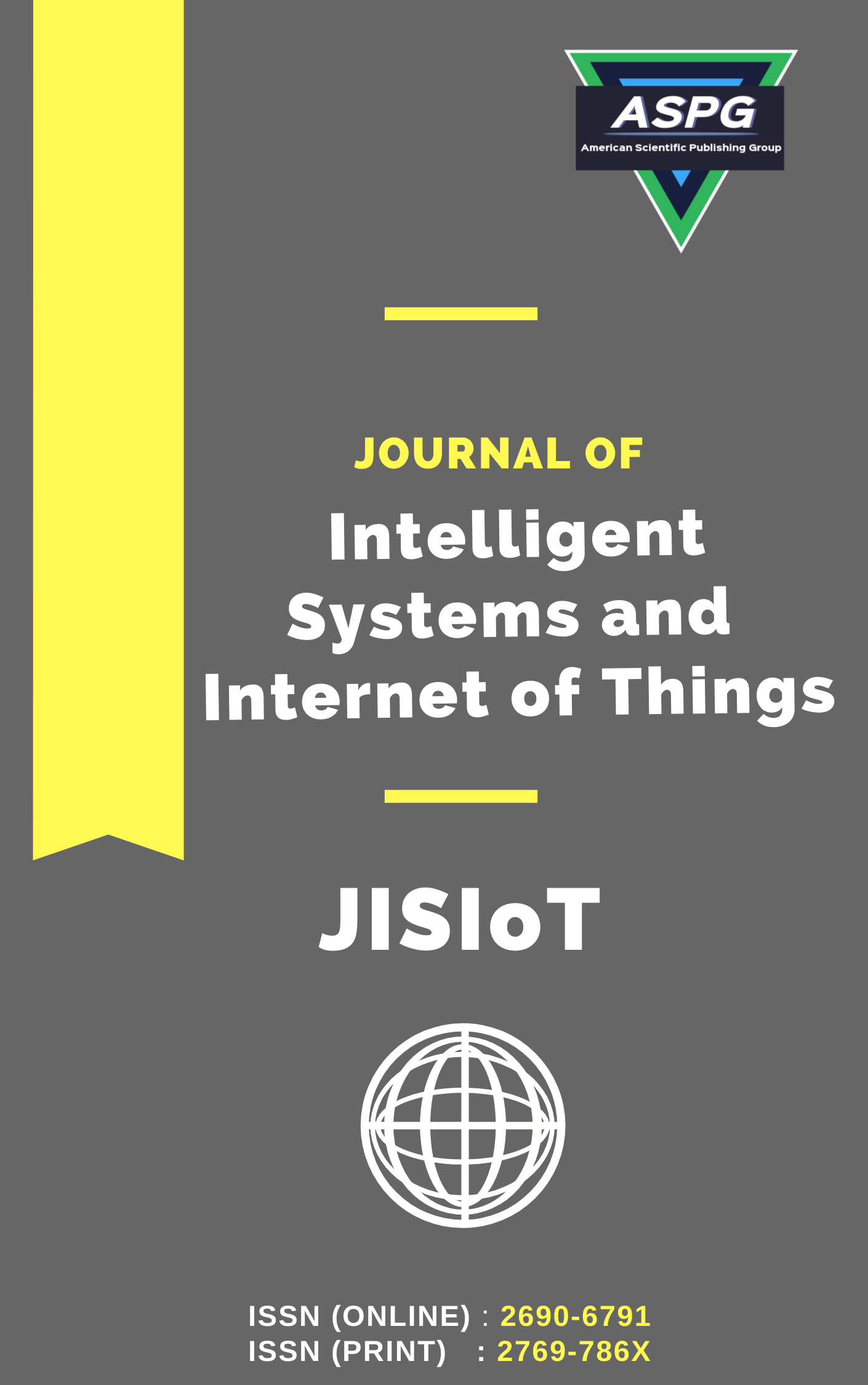

Volume 18 , Issue 1 , PP: 48-63, 2026 | Cite this article as | XML | Html | PDF | Full Length Article
Waleed Kh. Hussein 1 * , Ghaith J. Mohammed 2 , Ahmed Salih Al-Obaidi 3 , Massila Kamalrudin 4 , Mustafa Musa 5
Doi: https://doi.org/10.54216/JISIoT.180104
Malicious activities that seek to disrupt cloud communication are cybersecurity threats. Nevertheless, none of the existing works focused on detecting the attacks that happened in the Blade Server (BS) in the cloud. Therefore, this paper proposes an efficient Intrusion Detection System (IDS) framework for BS in the cloud by utilizing Kerberos-based Exponential Mestre-Brainstrass Curve Cryptography (KEMBCC) and Sechsoftwave and Sparsele-centric Gated Recurrent Unit (SSGRU). Primarily, the cloud users are registered into the network. Then, the incoming data are encrypted. Here, to balance the incoming loads, BS is used. To detect attacks in BS, IDS is implemented. Initially, the data are preprocessed. Further, the big data are handled in the IDS. Afterward, the features are extracted and optimal features are chosen from it. Thereafter, to classify the attack and normal BS, the SSGRU classifier is used. After that, by generating a Sankey diagram, the attacked and non-attacked blades in the BS are differentiated. Next, the attacked blades are isolated, whereas the non-attacked blades are further used for load balancing on the cloud. According to the analysis results, this model performed superior to the other models by attaining an accuracy of 99.43%.
Cloud Computing , Blade server , Cybersecurity threat detection , Set-Union Combiner-based Hadoop map-reduce , Grid-Greedy initialization-based Shark Smell Optimization
[1] M. Ahsan, K. E. Nygard, R. Gomes, M. M. Chowdhury, N. Rifat, and J. F. Connolly, “Cybersecurity Threats and Their Mitigation Approaches Using Machine Learning—A Review,” Journal of Cybersecurity and Privacy, vol. 2, no. 3, pp. 527–555, 2022. [Online]. Available: https://doi.org/10.3390/jcp2030027.
[2] Ö. Aslan, S. S. Aktuğ, M. Ozkan-Okay, A. A. Yilmaz, and E. Akin, “A Comprehensive Review of Cyber Security Vulnerabilities, Threats, Attacks, and Solutions,” Electronics (Switzerland), vol. 12, no. 6, pp. 1–42, 2023. [Online]. Available: https://doi.org/10.3390/electronics12061333.
[3] B. Alouffi, M. Hasnain, A. Alharbi, W. Alosaimi, H. Alyami, and M. Ayaz, “A Systematic Literature Review on Cloud Computing Security: Threats and Mitigation Strategies,” IEEE Access, vol. 9, pp. 57792–57807, 2021. [Online]. Available: https://doi.org/10.1109/ACCESS.2021.3073203.
[4] N. Ahmed, T. Baker, Z. Jalil, A. Rasool, and W. Ahmad, “Cyber security in IoT-based cloud computing: A comprehensive survey,” Electronics (Switzerland), vol. 11, no. 1, pp. 1–34, 2022. [Online]. Available: https://doi.org/10.3390/electronics11010016.
[5] S. El Kafhali, I. El Mir, and M. Hanini, “Security Threats, Defense Mechanisms, Challenges, and Future Directions in Cloud Computing,” Archives of Computational Methods in Engineering, vol. 29, pp. 223–246, 2022. [Online]. Available: https://doi.org/10.1007/s11831-021-09573-y.
[6] M. Abdullahi, Y. Baashar, H. Alhussian, A. Alwadain, N. Aziz, L. F. Capretz, and S. J. Abdulkadir, “Detecting Cybersecurity Attacks in Internet of Things Using Artificial Intelligence Methods: A Systematic Literature Review,” Electronics (Switzerland), vol. 11, no. 2, pp. 1–27, 2022. [Online]. Available: https://doi.org/10.3390/electronics11020198.
[7] V. Chang, L. Golightly, P. Modesti, Q. A. Xu, L. M. T. Doan, K. Hall, S. Boddu, and A. Kobusińska, “A Survey on Intrusion Detection Systems for Fog and Cloud Computing,” Future Internet, vol. 14, no. 3, pp. 1–27, 2022. [Online]. Available: https://doi.org/10.3390/fi14030089.
[8] M. L. Hernandez-Jaimes, A. Martinez-Cruz, K. A. Ramírez-Gutiérrez, and C. Feregrino-Uribe, “Artificial intelligence for IoMT security: A review of intrusion detection systems, attacks, datasets and Cloud–Fog–Edge architectures,” Internet of Things (Netherlands), vol. 23, pp. 1–33, 2023. [Online]. Available: https://doi.org/10.1016/j.iot.2023.100887.
[9] J. Guo and H. Guo, “Real-Time Risk Detection Method and Protection Strategy for Intelligent Ship Network Security Based on Cloud Computing,” Symmetry, vol. 15, no. 5, pp. 1–13, 2023. [Online]. Available: https://doi.org/10.3390/sym15050988.
[10] A. Alshammari and A. Aldribi, “Apply machine learning techniques to detect malicious network traffic in cloud computing,” Journal of Big Data, vol. 8, no. 1, pp. 1–24, 2021. [Online]. Available: https://doi.org/10.1186/s40537-021-00475-1.
[11] F. J. Abdullayeva, “Advanced Persistent Threat attack detection method in cloud computing based on autoencoder and softmax regression algorithm,” Array, vol. 10, pp. 1–11, 2021.
[12] A. Aldallal and F. Alisa, “Effective intrusion detection system to secure data in cloud using machine learning,” Symmetry, vol. 13, no. 12, pp. 1–26, 2021. [Online]. Available: https://doi.org/10.3390/sym13122306.
[13] Ö. Aslan, S. S. Aktuğ, M. Ozkan-Okay, A. A. Yilmaz, and E. Akin, “A Comprehensive Review of Cyber Security Vulnerabilities, Threats, Attacks, and Solutions,” Electronics (Switzerland), vol. 12, no. 6, pp. 1–42, 2023. [Online]. Available: https://doi.org/10.3390/electronics12061333.
[14] A. R. Al-Ghuwairi, Y. Sharrab, D. Al-Fraihat, M. AlElaimat, A. Alsarhan, and A. Algarni, “Intrusion detection in cloud computing based on time series anomalies utilizing machine learning,” Journal of Cloud Computing, vol. 12, no. 1, pp. 1–17, 2023. [Online]. Available: https://doi.org/10.1186/s13677-023-00491-x.
[15] H. Attou et al., “Towards an Intelligent Intrusion Detection System to Detect Malicious Activities in Cloud Computing,” Applied Sciences (Switzerland), vol. 13, no. 17, pp. 1–19, 2023. [Online]. Available: https://doi.org/10.3390/app13179588.
[16] P. Singh and V. Ranga, “Attack and intrusion detection in cloud computing using an ensemble learning approach,” International Journal of Information Technology (Singapore), vol. 13, no. 2, pp. 565–571, 2021. [Online]. Available: https://doi.org/10.1007/s41870-020-00583-w.
[17] A. Agarwal, M. Khari, and R. Singh, “Detection of DDOS Attack using Deep Learning Model in Cloud Storage Application,” Wireless Personal Communications, vol. 127, no. 1, pp. 419–439, 2022. [Online]. Available: https://doi.org/10.1007/s11277-021-08271-z.
[18] S. Balasubramaniam, C. V. Joe, T. A. Sivakumar, A. Prasanth, K. Satheesh Kumar, V. Kavitha, and R. K. Dhanaraj, “Optimization Enabled Deep Learning-Based DDoS Attack Detection in Cloud Computing,” International Journal of Intelligent Systems, vol. 2023, pp. 1–16, 2023. [Online]. Available: https://doi.org/10.1155/2023/2039217.
[19] S. S. Hameed, V. Akshaya, V. Mandala, C. Anilkumar, P. Vishnu Raja, and R. Aarthi, “Security enhancement and attack detection using optimized hybrid deep learning and improved encryption algorithm over Internet of Things,” Measurement: Sensors, vol. 30, pp. 1–8, 2023. [Online]. Available: https://doi.org/10.1016/j.measen.2023.100917.
[20] T. H. H. Aldhyani and H. Alkahtani, “Artificial Intelligence Algorithm-Based Economic Denial of Sustainability Attack Detection Systems: Cloud Computing Environments,” Sensors, vol. 22, no. 13, pp. 1–24, 2022. [Online]. Available: https://doi.org/10.3390/s22134685.